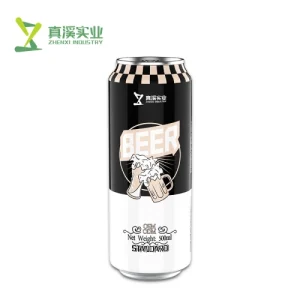The issue of whether beverage cans are becoming BPA-free is extremely topical, especially considering the ongoing debates about potential health risks associated with bisphenol A (BPA). BPA, a synthetic chemical used in the manufacture of certain plastics and resins, has been widely studied for its potential to mimic hormones.
BPA is most common in the epoxy resin linings of beverage cans to prevent metal corrosion and contamination. On the other hand, many different research studies have expressed Zika viruses through plastics leaching into drinks which has promoted most people to turn away from using BPA-formulated products and encourage for BPA-free options instead. In 2019 the North American production of cans with BPA-free linings surpassed 90 percent, that was however based on information by Can Manufacturers Institute as reported in court documents.
Consumer demand, as well regulation and science are putting pressure on to move from BPA. Both EFSA and FDA have carried out assessments of BPA's safety. Though the FDA has said BPA is safe at current food levels, consumer and scientific groups have called for alternatives to eliminate any risk.
BPA-free linings including those made from acrylic, polyester, and other proprietary blends are being used by more beverage companies. Take Coca-Cola for instance, they have announced that BPA-free linings will be used for all its products. These non-BPA linings still will continue to provide the same level of protection for canned beverages, preventing any metal from leaching out into drinks.
BPA-free liners require a thorough testing and quality control in transit to ensure they are safe and reliable. BPA-free alternatives can reduce the migration of chemicals into beverages by up to 78%: A multi-laboratory comparison study carried out in 2020 found that BPA-containing materials exhibited some of the highest levels of chemical contamination while similar products constructed with alternative resins were among those with significantly lower rates. The influence of factors that may cause the migration increases (such as temperature fluctuation, food acidity and ethanol content) was not great enough to reach safety thresholds set by regulatory agencies.

The transition will also be dependent on the cost and efficiency of producing BPA-free cans as well. Although the original change was associated with a high r&d cost, economies of scale and advances in technology manufacturing have taken down prices for BPA-free linings. This is one area where significant growth will occur in the next 4 years as well since global demand for safer alternatives has generated nearly $6.5 billion globally by end of 2020.
Be it famous environmental activist Erin Brockovich making the case that we need to take these harmful chemicals out of consumer products. "We have... discovered that what we dump into our environment in the end can affect human well-being," she said. This furthers the implications when transitioning to BPA-free beverage cans, and not just in terms of consumer health but also with regard to environmental sustainability.
BPA-Free Trend Reinforced by Regulatory Developments After France had banned BPA in food contact materials entirely, all manufacturers were pressured to speed up the development and implementation of replacements for them. This pressure to regulate has started a chain reaction which encorages other countries and companies to do the same.
The transition to globally BPA-free beverage cans is still held-back by challenges even as the fight progresses. By reason of the regulatory discrepancy and market power, some area may persist in applying BPA-based linings. It is imperative that progress in the marketplace be tracked well into the future and further public efforts are made to ensure everyone can benefit from safer products free of BPA.
Ultimately, consumer demand combined with regulatory actions and new research have caused a drive in the shift toward BPA-free Beverage Cans. Though it is a challenge of manufacturing and significant in cost, the gains to consumer health as well environmental are finally coming on stream. It is an every changing & fast-evolving industry with more players entering in this segment and countries moving to replace the BPA-based packaging as its safer, sustainable.